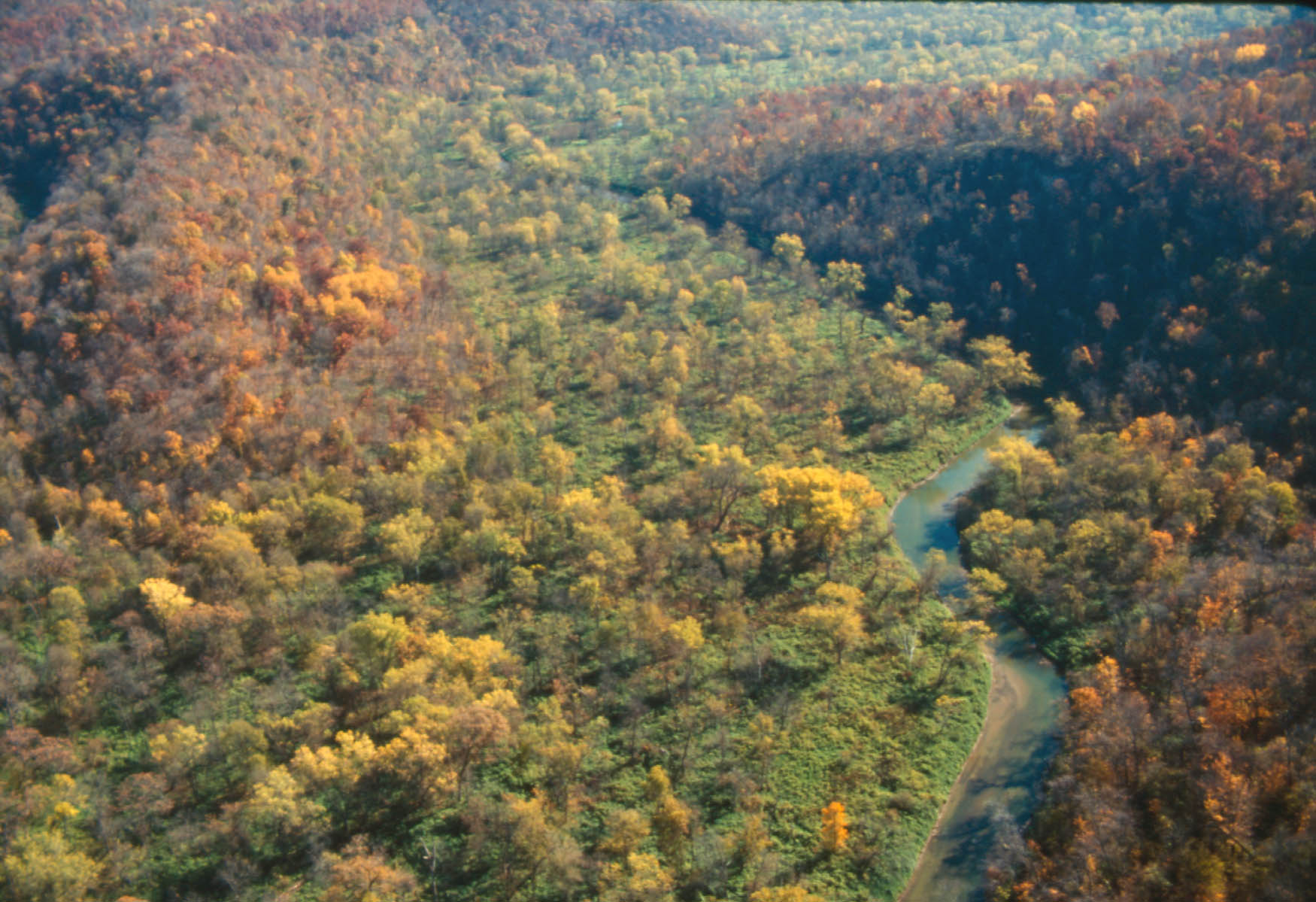 An act of Congress. That’s what was needed to add the Heritage Addition to Effigy Mounds National Monument, along with 20 years of active effort, 1,400 donors (of whom 1,056 were new to INHF) and $1.5 million in funding.
An act of Congress. That’s what was needed to add the Heritage Addition to Effigy Mounds National Monument, along with 20 years of active effort, 1,400 donors (of whom 1,056 were new to INHF) and $1.5 million in funding.
When an unusually large 1,045-acre woodland area along the Yellow River at Effigy Mounds became available in the early 1980s, INHF stepped in to protect the nature area by leading landowner negotiations and, nearly two decades later, spearheaded the fundraising process, the Congressional Act required to expand the monument’s boundary and other logistical efforts. The project became known as the Heritage Addition, and its completion increased the size of Effigy Mounds to 2,526 acres.
Heritage Addition continues to impact wildlife habitat and land protection in the Effigy Mounds area years after the project was completed. The addition, along with the Yellow River State Forest, created over 4,000 acres of conservation necessary for certain bird species, such as the cerulean warbler, that need undisturbed interior habitat.
Honoring an ancient culture
Finished in 2000, the Heritage Addition expanded the Effigy Mounds National Monument, the nation’s foremost educational center for the study of the earthen mounds that were built by the Effigy Culture, an ancient Native American culture. It also connects Effigy Mounds with Yellow River State Forest.
Although prehistoric mounds can be found elsewhere in the eastern half of the U.S., the four-state Blufflands Region, which includes Effigy Mounds, has the highest density of regularly constructed mounds in the shapes of mammals, birds and reptiles. The national monument protects 31 effigy mounds as well as 175 conical, linear and compound mounds that were built over the course of 2,500 years. Heritage Addition itself contains 13 archeological sites. The area’s protection was critical, and in 1949, President Truman proclaimed Effigy Mounds a national monument.
World-class habitat
Besides being an important cultural landmark, Heritage Addition also provides key habitat for wildlife. Truman’s designation of Effigy Mounds as a national monument was to not only preserve the mounds but to also protect wildlife and the scenic views of the area.
At the time of settlement, Iowa contained nearly 7 million acres of woodland or oak savanna, according to Jeff Goerndt, State Forests Section Chief at the Iowa DNR. Today slightly less than three million acres remain, which has led to a loss of species. Because most of Iowa’s woodlands were located in the Bluffland Region, Effigy Mounds’ native woodlands play an important role in re-establishing the area’s original habitat. Several species of migratory woodland birds, including thrushes and warblers, that nest in Canada and northern states rely on forested areas in Iowa for food and shelter to ensure their survival during spring and fall migration, said Doug Harr, President of Iowa Audubon.
In October 2013, the Iowa Audubon, the National Audubon Society and BirdLife International announced that the Iowa DNR’s designated Effigy Mounds-Yellow River Forest Bird Conservation Area, which includes the Heritage Addition site, had been designated a Globally Important Bird Area. This designation, the highest honor for a birding area, showcases the project’s world-class importance for the observation, protection and preservation of at-risk birds, such as the Cerulean Warbler.
Conservationists and trained volunteers have documented species including Red-shouldered hawk, Pileated woodpecker, Woodcock, Eastern Bluebird, Barred Owl, Broad-winged Hawk, Osprey and the Yellow-billed Cuckoo, as well as more common species, at the Heritage Addition.
Continuing impact
At the time, Heritage Addition was one of our most challenging land projects. Its success and the outpouring support – much of which was from people we hadn’t met before – gave us confidence to take on even more challenges since then. The impacts have been — and continue to be — far-reaching.